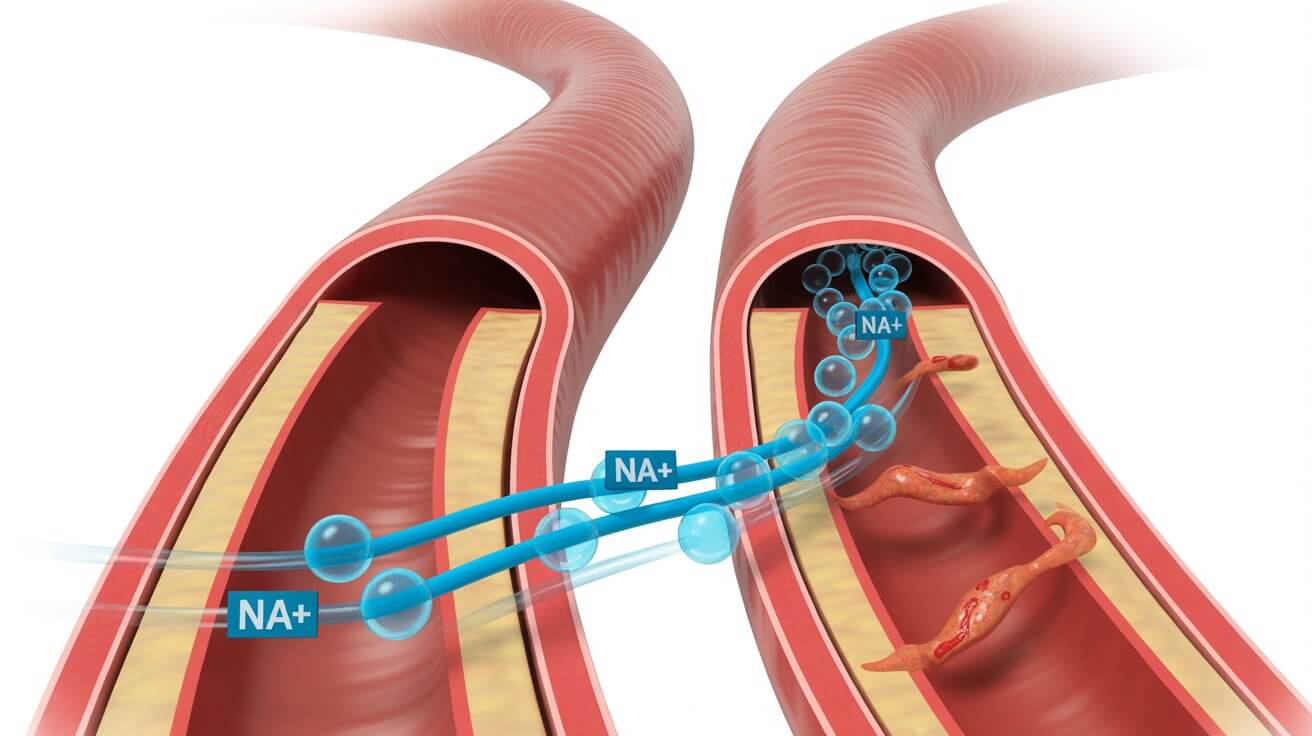For years, something felt… different. Social gatherings were exhausting, requiring a mental script of how to act, what to say, and when to smile. Small talk felt like a foreign language. The hum of fluorescent lights in the office was a constant, irritating buzz that no one else seemed to notice. You might have been called “shy,” “too sensitive,” or “quirky.” You might have even believed it yourself, collecting a lifetime of experiences that left you feeling like you were somehow navigating the world with a different map than everyone else—unaware that these were often signs pointing toward what many later recognize through an adult autism diagnosis.
Then, one day, perhaps through a late-night internet search, a character in a show, or a friend’s story, a new word enters your vocabulary: autism. Suddenly, the pieces of a lifelong puzzle begin to click into place. This feeling, this sudden, profound clarity, is a sentiment echoed by a rapidly growing number of people seeking an adult autism diagnosis. For them, it’s not just a trend; it’s a revelation.
Why Is Adult Autism Diagnosis on the Rise?
This phenomenon begs the question: why now? Is autism becoming more common? The answer is more complex. The rise in adult diagnoses isn’t necessarily about an increase in prevalence, but rather a dramatic increase in awareness, understanding, and evolving diagnostic criteria. We are, as a society and a medical community, finally starting to recognize the many different ways autism can present, especially in individuals who became experts at navigating a world not built for them.
More Helpful Reads You Might Like:
What Is Autism Spectrum Disorder (ASD)? A Modern Definition
Before diving into the adult experience, it’s crucial to understand what autism is. At its core, ASD is a neurodevelopmental condition, meaning it affects how the brain develops and processes information. It’s characterized by two main areas of difference:
- Social Communication and Interaction: This can manifest as difficulty with back-and-forth conversation, challenges in understanding non-verbal cues (like body language or tone of voice), and a different approach to forming and maintaining relationships.
- Restricted, Repetitive Patterns of Behavior, Interests, or Activities: This includes having deep, specialized interests (sometimes called “special interests”), a strong need for routine and predictability, repetitive movements (stimming), and sensory sensitivities (being over- or under-sensitive to light, sound, touch, or smell).
The term “spectrum” is key. It signifies a vast diversity in the autistic experience. There is no single “look” or “type” of autism. The support needs of one autistic person can be vastly different from another.
The Hidden Struggle: Understanding Autism Masking in Adults
One of the most significant reasons many adults are only now receiving a diagnosis is a phenomenon known as masking or camouflaging. Masking is the subconscious or conscious suppression of natural autistic traits to fit in with neurotypical (non-autistic) social expectations.
What Does Masking Look Like?
Imagine having to manually calculate every social interaction. For many undiagnosed autistic individuals, this is a daily reality. Masking can look like:
- Forcing eye contact even when it feels uncomfortable or intense.
- Mimicking the gestures, facial expressions, and speech patterns of others.
- Preparing and rehearsing scripts for conversations.
- Suppressing repetitive behaviors, or “stimming,” like hand-flapping or rocking.
- Pushing through extreme sensory discomfort in noisy or bright environments.
The Long-Term Cost of Camouflaging
While masking can be an effective short-term survival strategy, it is mentally and emotionally draining. It can lead to chronic exhaustion, anxiety, depression, and a profound sense of a lost or inauthentic identity. For decades, the classic image of autism was based on presentations in young boys. Girls and those with more subtle presentations were often overlooked because they were more adept at masking, their struggles misinterpreted as shyness, anxiety, or even just being “a good, quiet kid.”
Common Signs of Autism in Adults That Are Often Missed
While experiences vary widely, some common threads may suggest the presence of autism in adults who were not diagnosed as children:
- Social Exhaustion: Feeling completely drained after social events, even ones you enjoyed. This is often called a “social hangover.”
- Sensory Sensitivities: Being intensely bothered by sounds, lights, textures, or smells that others don’t notice. Or, conversely, needing strong sensory input.
- Intense, Niche Interests: Having deep, passionate interests in specific topics, often becoming an expert in them.
- Difficulty with Small Talk: Finding casual, unscripted conversation confusing, pointless, or stressful.
- A Need for Routine: Feeling anxious or upset when plans change unexpectedly. A predictable schedule provides a sense of safety.
- Challenges with Emotional Regulation: Experiencing emotions very intensely or having difficulty identifying and expressing them.
The Path to Clarity: How to Get an Adult Autism Diagnosis
Realizing you might be autistic can be overwhelming. The journey toward a formal adult autism diagnosis begins with seeking a qualified professional. This is not a simple checklist or a quick online test.
What to Expect During an Evaluation
A proper assessment by a clinical psychologist or psychiatrist with expertise in adult ASD usually includes:
- Detailed Developmental History: The clinician will ask about your entire life, from early childhood experiences and friendships to your career and relationships. They are looking for lifelong patterns, not just current struggles.
- Clinical Interviews: These are structured conversations, often using standardized diagnostic tools, to assess social communication, interaction styles, and patterns of behavior.
- Self-Report Questionnaires: You will likely fill out forms about your traits and experiences.
- Input from Others (Optional): Sometimes, clinicians may ask to speak with a parent, partner, or long-time friend to get an outside perspective.
Life After Diagnosis: Embracing Your Authentic Self
Receiving a diagnosis is not about applying a label. It is about gaining access to a framework that can explain a lifetime of experiences. It provides a new, more compassionate language to understand your own needs. For many, it’s a gateway to self-acceptance and a profound sense of relief.
This new understanding can empower you to:
- Deconstruct the Mask: Begin to consciously unmask, allowing yourself to stim, honor your sensory needs (like wearing noise-canceling headphones), and engage in your deep interests without shame.
- Reframe Your Past: Past social “failures” or misunderstandings can be seen in a new light. It wasn’t a personal failing; it was a neurotype difference.
- Advocate for Your Needs: With a clearer understanding of your own brain, you can better advocate for accommodations at work or school and communicate your needs more effectively.
- Find Your Community: The internet has been instrumental in connecting autistic adults. Finding others who share similar experiences can combat the profound sense of isolation.
Ultimately, the conversation around adult autism diagnosis is a conversation about identity, acceptance, and human diversity. For the thousands of adults finally hearing the word that makes their life make sense, it is more than a diagnosis. It is a validation, a homecoming, and the start of a more authentic and understood life. If this story resonates with you, know that seeking clarity is a sign of strength, and understanding yourself is the first step toward building a life that truly fits.
Frequently Asked Questions (FAQ) About Adult Autism
Here are answers to some of the most common questions about autism in adulthood.
1. Can you develop autism as an adult?
No, you cannot develop autism as an adult. Autism is a neurodevelopmental condition, which means it originates during early brain development before birth. When an adult is diagnosed, it is not because they have newly developed autism; it is a late recognition of a condition that has been present their entire life. The diagnosis in adulthood simply means the signs were missed, misinterpreted, or effectively “masked” during childhood and adolescence.
2. Is there a simple test for adult autism?
There is no single, simple test like a blood test or brain scan for an adult autism diagnosis. Online quizzes can be a starting point for self-exploration, but they are not a valid diagnostic tool. A formal diagnosis requires a comprehensive evaluation by a qualified clinician (like a psychologist or psychiatrist) with expertise in adult autism. This process involves detailed interviews about your developmental history, social communication patterns, and behaviors, and it is essential for an accurate assessment.
3. Why are so many women being diagnosed with autism as adults?
Historically, the diagnostic criteria for autism were based on studies of young boys. As a result, the presentation of autism in girls and women was often overlooked. Women and girls may be more likely to “mask” or camouflage their autistic traits by mimicking the social behavior of their peers. Their intense interests might also be in more socially “acceptable” topics (e.g., literature, psychology, animals), making them less noticeable. Increased awareness in the medical community is now helping to identify autism in adult women who were missed in their youth.
4. What is the benefit of getting an official diagnosis as an adult?
For many, an official diagnosis provides profound validation and relief. It offers a framework to understand a lifetime of feeling “different,” reframing past struggles not as personal failings but as the result of a different neurotype. A diagnosis can:
- Lead to powerful self-acceptance and improved mental health.
- Provide access to appropriate therapies and support.
- Help you advocate for your needs at work or in educational settings (legal accommodations).
- Give you a new language to communicate your experiences and needs to family and friends.
- Connect you with a community of other autistic adults, reducing feelings of isolation.
Medical Disclaimer: This content is for educational purposes only and does not replace professional medical advice, diagnosis, or treatment. Always consult your physician or a qualified healthcare provider with any questions about a medical condition.
Sources & Further Reading
- Moseley, R. L., et al. (2024). ‘It’s a huge puzzle being put together’: a qualitative study of autistic adults’ experiences of the diagnostic process in the UK. BMC psychiatry, 24(1), 299. via PubMed
- “Signs and Symptoms of Autism Spectrum Disorders” via Centers for Disease Control and Prevention (CDC)
- “Autism Spectrum Disorder” via National Institute of Mental Health (NIMH)
- “Autism Spectrum Disorder (ASD) in Adults” via Johns Hopkins Medicine
- “Autism in adults: More common than we thought?” via Harvard Health Publishing
- “Autism Spectrum Disorder” via Cleveland Clinic









